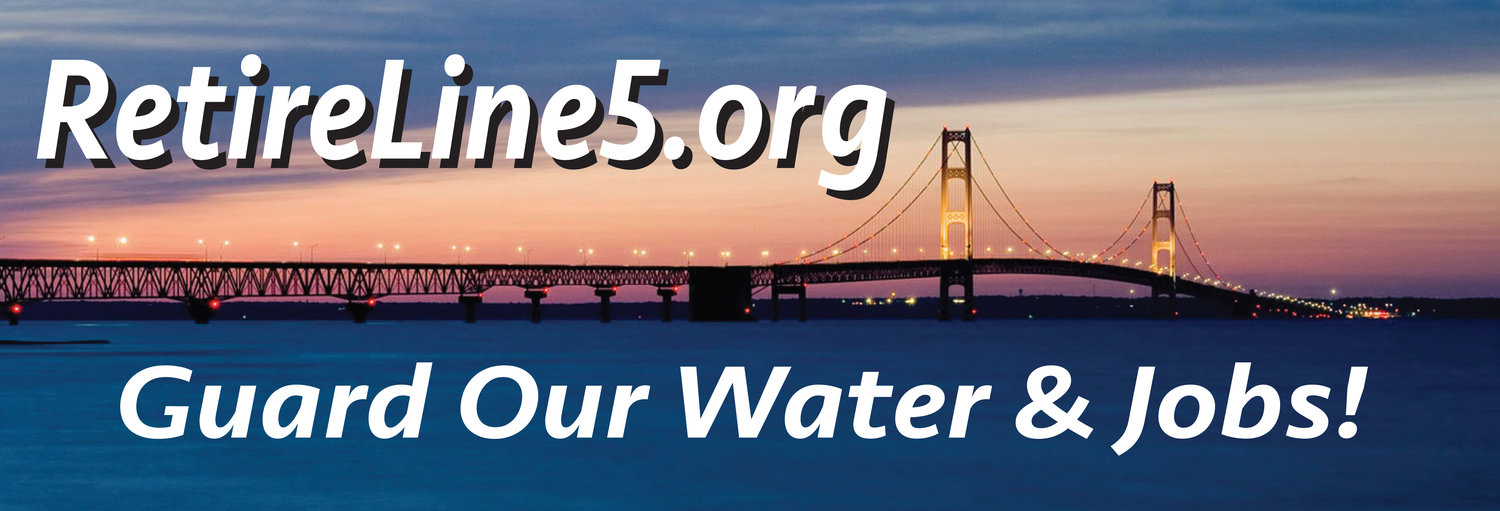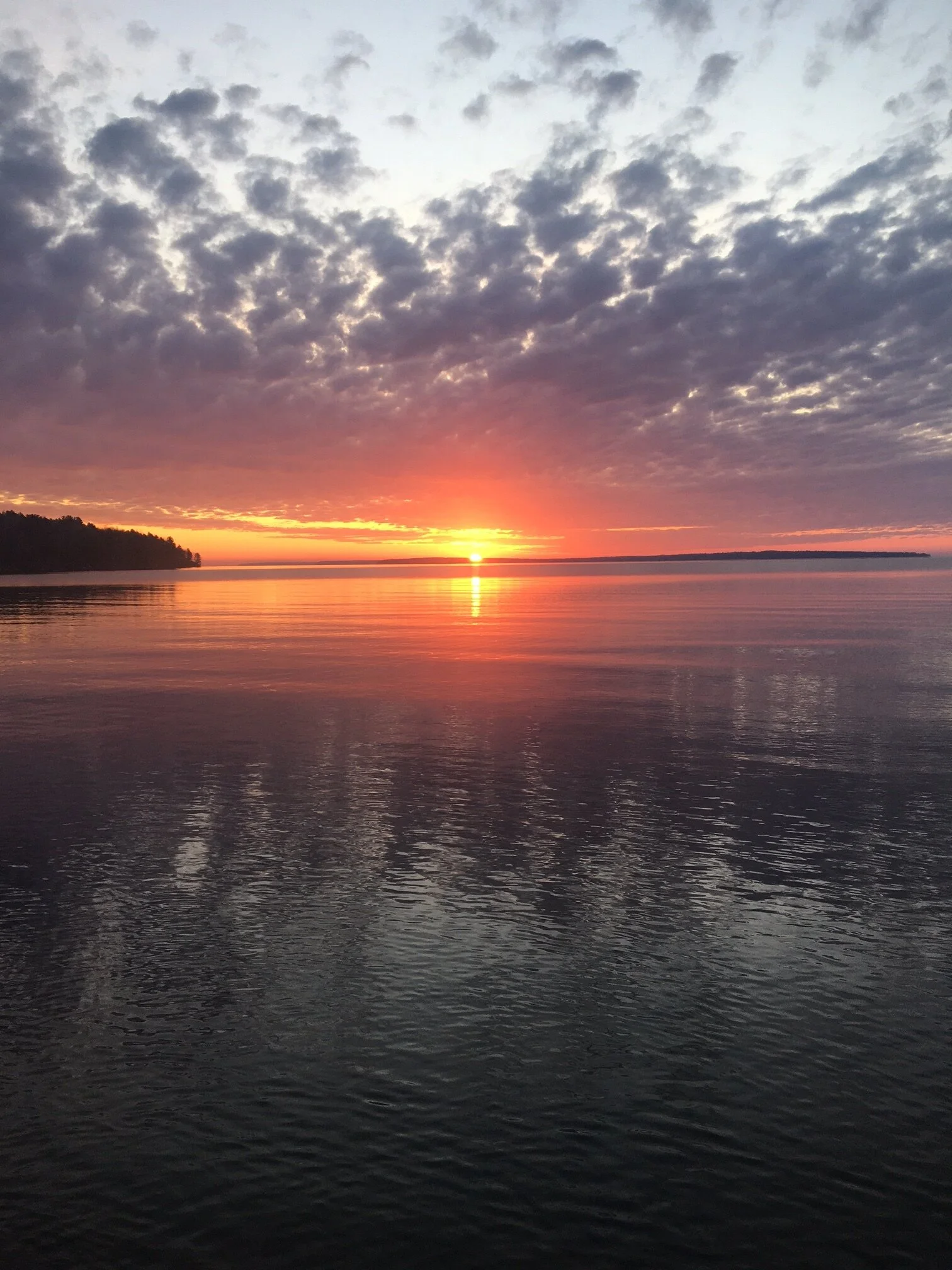***All information and images on this page are provided by the Natural Resources Advocacy Committee of the League of Women Voters of Ashland and Bayfield Counties.***
Home to the “Everglades of the North,” the Bad River Watershed in Northern Wisconsin is an environmentally sensitive region that drains into Lake Superior. The existing Enbridge Line 5 endangers this region, as would the proposed Line 5 Extension.
The Kakagon-Bad River Slough Complex
Photo credit: Jim Meeker/Ted Cline
The entire Bad River Watershed is structured like a bowl, with water from headwater streams draining quickly into the wetlands below. Any spill of oil in this region puts the entire wetland complex and Lake Superior at risk.
To add to these concerns, this region has had a number of severe precipitation events with rapid water run-off (due to the impermeability of the the volcanic rock just below the soil). Since 2013 that has caused erosion and extensive infrastructure damage in this area.
The region of Northern Wisconsin which abuts Lake Superior assumes great risk with no benefit from Line 5. Here, the pipeline runs entirely in the Lake Superior Basin.
Thirteen miles of Line 5 cross the Bad River Reservation just south of the Kakagon and Bad River Sloughs Complex. This complex includes 16,000 acres of wetlands, designated as “wetlands of international importance” by the RAMSAR Convention.
The Wisconsin Wetlands Association has recognized this area as one of 100 Wetland Gems in Wisconsin. It contains “the only remaining extensive coastal wild rice bed in the Great Lakes region,” according to the RAMSAR website.
The Bad River Watershed drains over 1,000 square miles/700,000 Acres of land in Northern Wisconsin. (click to enlarge image)
July 2016 flooding, with State Highway 13 and Canadian National Railroad damage from Trout Brook just south of North York In Northern Wisconsin.
2016 flooding in Northern Wisconsin showing sedimentation (“browning”) of Lake Superior.
2016 flooding with river sedimentation in Bad River Reservation near Denomie Creek.
The Bad River meander in the Bad River Reservation, through which Line 5 transects. The black line with the red dot denotes the path of Line 5.
Photo credit: David Joe Bates
The Bad River Reservation has had multiple problems with erosion and changing paths of the rivers within the borders of the reservation.
Click here to see the Mashkiiziibii Natural Resources Department brochure outlining the top issues with Line 5 within the reservation.
In 2018, a 28-foot section of pipe was discovered exposed due to erosion. Although the section has recently been repaired, it is being closely monitored and remains vulnerable. And where Line 5 crosses the Bad River, a meander has been developing for years. The narrow isthmus containing the underground pipeline has reached the dangerous measurement of just 25 feet wide. Continuing changes in the river’s path or the next huge precipitation event could cause the river to break through the isthmus and the pipeline due to the force of the water or rocks/woody debris.
In 2013, several easements between the Bad River Band of Lake Superior Chippewa and Enbridge expired, and the tribe decided in early 2017 not to renew them. In 2019, due to continued use of Line 5 through the Bad River Reservation, the tribe filed a federal lawsuit seeking the removal of Line 5 from the Reservation.
In 2019 and 2020, Enbridge acquired land easements for a proposed extension of Line 5 which skirts around the Bad River Reservation, but is still within the Bad River Watershed. This proposed expansion does nothing to diminish the potential devastation from any oil spill in this region, and also adds further problems from any new digging and blasting in this environmentally sensitive region, with its many Class 1 trout streams. The complex hydrology and geology of the area proposed for the Line 5 extension have also led to issues of great concern regarding contamination of local streams and rivers, and the Copper Falls Aquifer, which is recharged in areas where easements have been acquired.
The creeks in the area of the proposed Line 5 Extension are nurseries to fish like this Brook Trout fry.
The sandstone in the northern part of the area is moderately porous and serves as the drinking water supply for a large area. Known as the “Copper Falls Aquifer,” it is recharged by water permeating through sandy sediments of the overlying Copper Falls Formation.
Multiple municipalities and organizations have passed local resolutions against Enbridge Line 5 in this area, including the City of Ashland, the Red Cliff Band of Lake Superior Chippewa, the League of Women Voters of Ashland and Bayfield Counties, and 350 Chequamegon Bay. In July 2020, 1605 people submitted public comments to the Wisconsin Department of Natural Resources regarding Enbridge and its application for the proposed Line 5 Extension. Over 94% of the speakers testifying at the July 1 hearing asked the WDNR to deny Enbridge a wetlands and waterways permit, maintaining that it would place the Bad River Reservation, the Bad River Watershed, and Lake Superior in jeopardy.
Included in the video is Copper Falls, a Wisconsin treasure, which is at great risk with the Line 5 extension. A rupture in this region would result in immediate unstoppable contamination all the way to Lake Superior, given the waterfalls, rough terrain and limited access in this area.
““Water is the most critical resource issue of our lifetime and our children’s lifetime. The health of our waters is the principal measure of how we live on the land.”
-
”
GET INVOLVED!
Whether you currently live near the Bad River or its watershed, grew up here, vacation, plan to retire here, or simply care about the health of Lake Superior and its environs, your help is needed to stop the Line 5 extension from happening, and to #ShutDownLine5 in its entirety. Please contact naturalresources@abcleaguevoters.org to learn how you can help.
Reference section:
For further information regarding Line 5 on the Bad River Reservation, please check out: http://www.badriver-nsn.gov/natural-resources/threats/
For further information regarding Line 5 in Northern Wisconsin, please go to: www.sierraclub.org/wisconsin/line-5 or www.lwvabcwi.org/issues-advocacy
For pipeline expansion and easement information in Wisconsin, please check out: www.80feetisenough.org and www.wisconsineasementactionteam.org.
For details regarding water regulations and procedures with pipelines in Wisconsin, please look at: www.midwestadvocates.org/issues-actions/issues/details/pipelines.
For another local website interested in this topic, please check out: https://ganawendannibi.wordpress.com/
To send in your personal stories from Chequamegon Bay and the Bad River Watershed region, please forward to: www.tinyurl.com/SuperiorWatersStoryCorps.
To help you understand how pipelines are regulated in Wisconsin and how to make your voice heard in the decision-making process, please go to https://wigreenfire.org/wisconsins-green-fire-work-on-oil-pipelines/
Fishing areas like this are at great risk as long as Line 5 passes upstream of Lake Superior). Photo credit: Joel Austin



